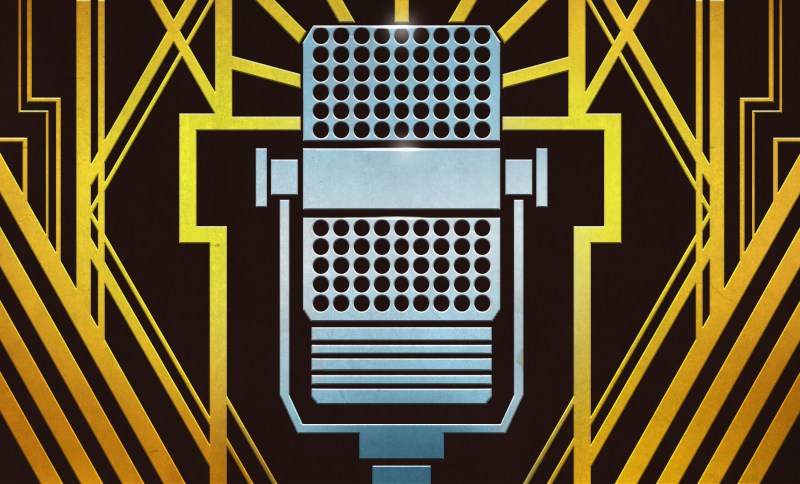It’s Independence Day here in the USA, but if you’re not a fan of fireworks and hot dogs, Elliot and Dan’s rundown of the best hacks of the week is certainly something to celebrate. Rest easy, because nothing exploded, not even the pneumatic standing desk that [Matthias] tore into, nor the electroplated 3D prints that [H3NDRIK] took a blowtorch to. We both really loved the Ploopiest knob you’ve ever seen, which would be even Ploopier in anodized aluminum, as well as an automatic book scanner that takes its job very seriously. We looked into the mysteries of the Smith chart, another couple of fantastic student projects out of Cornell, the pros and cons of service loops, and what happened when the lights went out in Spain last Spring. And what does Janet Jackson have against laptops anyway?
Episode 327 Show Notes:
News:
- Supercon CFP Extended
- Announcing The 2025 Hackaday One Hertz Challenge
What’s that Sound?
- Fill out this form for your chance to win!
Interesting Hacks of the Week:
- Open-Source Knob Packed With Precision
- Standing Desk Uses Pneumatics To Do The Job
- Data Visualization And Aggregation: Time Series Databases, Grafana And More
- A Scanner For Arduino-Powered Book Archiving
- Audio Localization Gear Built On The Cheap
- Meet Cucumber, The Robot Dog
- Blowtorching Electroplated 3D Prints For Good Reason
Quick Hacks:
- Elliot’s Picks
- Dan’s Picks:
Can’t-Miss Articles:
















To get out in front of all the FUD: Ploopy’s Knob is really open source (just like there other products). A few folks have been falsely claiming Ploopy is lying about being open source and try to scam the community. If you are struggling to find the source code, please just ask for help…
The design intent should be obvious from the annotated mechanical drawing. That is the “source code” of the part. When there is enough information in the drawing to manufacture the part, there is also enough information to re-create the 3D model from scratch as well.
The point of CAD isn’t in creating the 3D model, but to create the documentation that specifies the actual part. The 3D model by itself, even if it did contain sketches and constraints, is not documentation. All that stuff is only to make the CAD software work and that doesn’t necessarily have anything to do with your design intent. The model doesn’t even always have to be exactly correct to the part, especially with threads and other standard features.
Makers ignore this point entirely and don’t even touch the drafting part of their CAD software because they’re sending the model directly to their 3D printer instead of trying to document and communicate the process to another person. Of course you might have such complex geometry that it can only be described in data, but you still need to describe what that data is and how it’s supposed to be used.
I think this is an interesting topic and appreciate your input on it. I also think much of “source code” is the licensing rather than that tools required to make changes to it. I don’t think the inclusion of binary file makes something not-open-source if licensed correctly, but it does feel like an outliner.
I think the CAD software ecosystem in general is making CAD file “source code” harder, and people are doing their best by distributing the CAD model in the most portable formats (STEP, STL, etc.). There is a parallel with image files as well. If an open source project contain image files (say icons) created with Photoshop, would that make the project not-“open source” (cause whatever photoshop files were not included)?
I think if the CAD model is distributed in a portable format, you can extra measurements and create your own version of whatever is models. STEP and STL files can also be modified/edited with the right packages, so this seems reasonable to say it’s “open source”.
The licensing merely sets the permissions. The “source code” is all the information needed to make the part as specified. “Open source” is indeed relevant to how you may use the information, but here we’re not talking about that – we’re talking about sharing the source itself first, and the open or closed nature by license is secondary to the point.
That alone does not communicate the design intent and other considerations, such as the tolerance chain you need to mind to produce the part so it would come out fit for function despite process variation.
For example, if you need a pattern of holes in a sheet of metal, you can extract their positions out of the model, but what you’re missing is the reference point to describe how to measure the location of each hole to avoid stacking errors. The 3D model is “perfect” while the actual part will never be, and it might be costly and difficult to make all the features adhere to the tolerance of the most demanding detail. That is why such information is written down in the annotated drawing. This information decides the actual manufacturing process – the order of operations, clamping, quality control, etc.
In other words, the 3D model does not contain all the information relevant to the design. It is not the complete “source code” of the part.
In my view, to be fully “open source”, the CAD design should contain the fully annotated mechanical drawing and any data resources needed to re-create both the physical part and the 3D model of it. This does not need to include the STL or STEP data, as those are analogous to the program binaries compiled out of a source code.
Any one know about PARASOLID, are they just 3D objects or are they parametric?